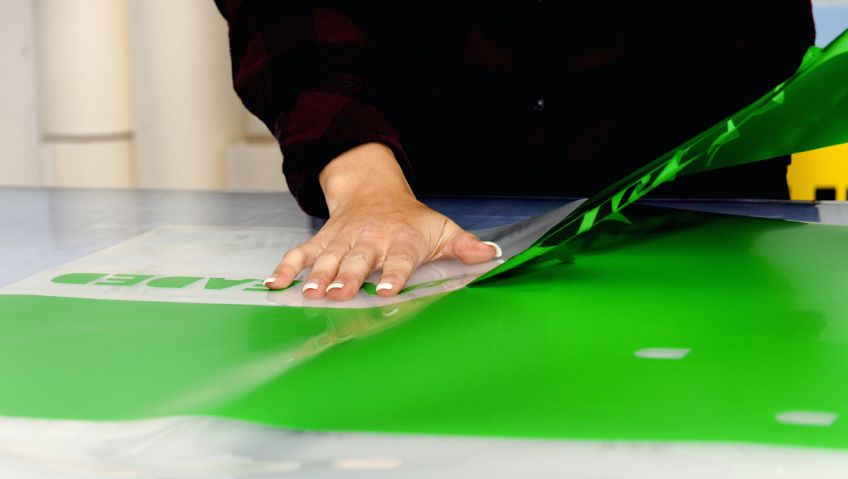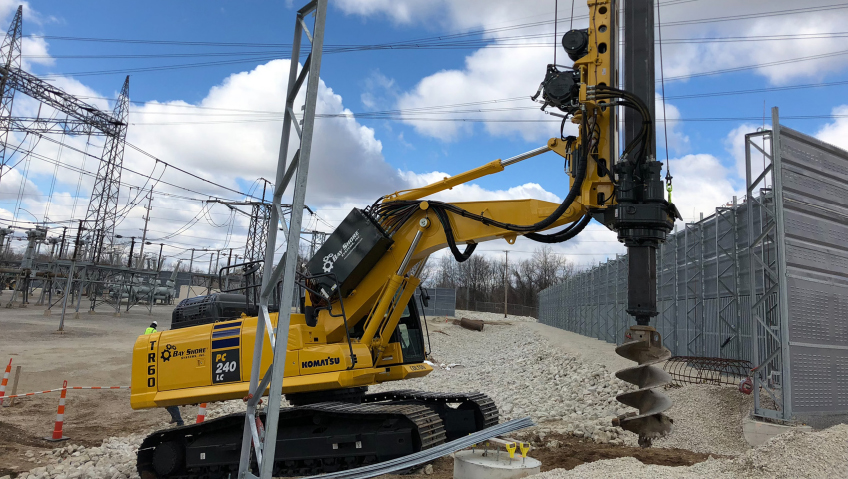Success in business comes from persistence, vision, recognizing opportunities, and seizing them at the right time.
In the 1970s, Bruce Merrick became aware of a small bleacher business that was responsible for an innovative new type of portable bleacher. After purchasing the business and relocating it from southern Alabama to Kentucky in 1979, the company known today as Dant Clayton was born.
Growing to a highly trained staff of about 220 including office personnel, accountants, architects, designers, project managers, shop floor welders, fitters, fabricators, and general laborers, Dant Clayton is one of the world’s most innovative companies behind bleacher and stadium systems.
Ripples of growth
Starting in the parks and recreation sector in its early years, Dant Clayton grew into bringing its product to high schools, colleges, and the professional sports market. About a decade ago, the company took another step forward when it moved from all-outdoor facilities to a portfolio of products for indoor facilities. This soon led to the acquisition of an architectural railing business and an even richer offering for its customers.
“The theme behind everything is that we must continually increase the size of our addressable market,” says Chairman and founder Bruce Merrick, adding that most of Dant Clayton’s growth, by far, is organic, achieved by enhancing its product lines. By taking on projects ranging from simple park bleachers to enormous, 50,000-seat stadiums, Dant Clayton meets—and exceeds—the needs of clients from project inception to completion.
“We don’t look at it from a standpoint of dollar range, but from a standpoint of scope, and where our expertise lies,” says President and CEO Jonathan O’Leary. “We started in parks and recreation, and have a catalog business now that serves some of that market. And we do full stadiums, the largest you can. So we don’t turn down jobs because of the dollar value; what’s important is that we can add value to the process through our unique value propositions.”
Vertically integrated
With capabilities including design, manufacturing, fabrication, and installation, the company offers much more than many competitors. As a vertically integrated business, Dant Clayton doesn’t rely on outsourcing but rather takes ownership of sourcing, supplies, design, manufacturing, and production—in short, all key areas. This was vital during the recent pandemic when supply chains were disrupted.
“If you’re contracting with someone who’s not vertically integrated, control over that supply chain is limited, and there’s a lot of room for errors,” says O’Leary.
As well as manufacturing and construction, Dant Clayton also takes on design work upfront through its preconstruction services group. Investing in these preconstruction engineering and design services, the company boasts many staff members holding Master’s degrees and MBAs.
“We put a strong focus on hiring very talented people,” O’Leary says, “and have a rigorous recruitment process and high standards to ensure our team members contribute to what we call a differentiated, highly service- and systems-oriented process by which we help our customers design and develop the best solutions to fit their unique projects.”
To further ensure success, the company participates in programs for interns and refugees, works with local schools, welding programs, and universities, and promotes employees from within.
The company has an impressive 400,000 square feet of manufacturing space in three different locations—an aluminum fabrication shop, a steel fabrication shop, and an architectural railing fabrication shop—and is able to control inputs. And by forging deep relationships with supply chain partners over the past 44 years, Dant Clayton remains in control.
“We’re not worrying about someone else manufacturing it,” says O’Leary. “We have total accountability. So we bring that together and deliver that value to a customer with vertical integration. Control, fit and finish, and design—combined with all in-house manufacturing—deliver to the field a set of systems and services that otherwise would be completed by disparate parties who might or might not have good communication and collaboration.”
Innovation with purpose
After more than four decades in business, Dant Clayton remains focused on purposeful innovation; new developments must benefit safety, aesthetics, and functionality to be considered.
About 15 years ago, there were issues with aluminum walking surfaces. Clients, architects, and end users reported that these surfaces became slippery when wet. Seizing this as an opportunity to improve public safety in spectator seating facilities, the company devoted resources and time to the process and the equipment needed to address the issue. This saw the development of a slip-resistant walking surface with improved aesthetics and even more importantly, the same properties as a brushed concrete sidewalk, a feature unequaled in the industry.
“We’re solving problems,” says Merrick. “It’s not like a consumer product that’s mostly driven by a marketing campaign; we’re solving real-life problems. We believe this has had a long and significant impact on the safety of public seating facilities.” And while the company has had some imitators, no one has caught up with them.
Another one of Dant Clayton’s many innovations is one-piece stadium chairs. A patented product design, the chairs incorporate ergonomics seen in award-winning office chairs designed for people to sit in all day. “Duplicate the ergonomics of an award-winning office chair and apply that to a stadium, and you have something,” says Merrick.
Talking technology
Taking on projects mainly in the continental United States, Dant Clayton has also worked in Canada and on some islands. To ensure clients both big and small receive the same outstanding quality, the company continues investing in technology.
This includes new CNC machines on the plant floor, state-of-the-art customer relationship management (CRM) systems like Salesforce, and a new enterprise resource planning (ERP) system, along with control systems with scanning to eliminate errors and Lean Manufacturing for better product flow and quality.
From a customer-facing standpoint, the company operates in BIM 360 and Revit, collaborative 3D models that allow sharing of construction drawings with architects, owners, and engineering firms. By working in real time, potential issues like clash detection are addressed as they arise. Alongside other technologies like 2D CAD and Procore construction management software, Dant Clayton ensures everyone has access to the same project information and is on the same page with scope and change orders.
“We’ve implemented state-of-the-art construction-and-execution software,” says O’Leary. “We’re always looking for new technology. Artificial intelligence (AI) is on the horizon, and the management team here has an eye on AI and how we might apply it to various functions in our business like design, utilizing our human capital for higher-level, value-added services, and letting AI take on some of the more basic things.”
Continuing to build on its many years of success, Dant Clayton continues to innovate around new products and systems to bring value to customers. Recently, the company launched its updated website featuring projects past and present. As a vertically integrated business, Dant Clayton continues focusing on the value it brings to customers with its architectural railing company. Heavily involved in collegiate and arena renovations, the company frequently works in consultation with America’s top engineers, architects, designers, and owners to create unique solutions to complex problems.
Dant Clayton is currently working on renovating the historic, 100-year-old Boone Pickens Stadium in Stillwater, Oklahoma and on some other landmark works. “The core market has a lot of opportunity for us,” says Merrick. “So as long as there is growth opportunity in our core markets, that’s a priority for us, and doing better and better every day.”
Building on strength
Through its consultative approach, value-added engineering, and vertical integration, Dant Clayton continues to build on its strengths for the success of all clients. Taking a multi-pronged approach to projects, the company examines how it can add value to the team from the start, beginning with its preconstruction and sales teams, business development teams, and engineering staff. So when an architect, owner, engineer, or general contracting company calls, they know that Dant Clayton is immediately going to add value.
“We have a unique opportunity to expand on our work in the high-end collegiate and professional markets, but it’s still very important for us to focus on our core business of K-12, and on football, soccer, baseball and softball, and projects supporting all levels of sports programs,” says O’Leary.
“But as we grow—and we’ve grown tremendously this year—we’re looking at incorporating solutions in our railing division with solutions in our stadium division. We see a plethora of opportunities in our collegiate market in older stadiums, but also indoors with arenas. These indoor arenas are where we have a lot of growth potential, where we can utilize our portfolio approach with fit and finish to really help arena owners renovate their older venues. There are a lot of these, 30 and 40 years old, that are aging out,” he explains.
“So we’ll continue to innovate and figure out how to design more efficiently, manufacture more efficiently, and construct more efficiently. Continuous improvement is our lifeblood; it’s one of our values. I think those combined will excite customers to work with us, and we’ll continue to grow in those avenues.”






